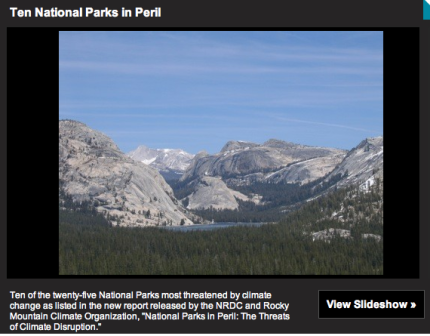 From my home in Yellowstone National Park, I’ve watched hundreds of vehicles entering the park under the famed Roosevelt Arch, and I have taken hundreds of photographs for strangers wanting a memento of themselves standing next to its impressive rock walls. Underneath its inscription, “For the benefit and enjoyment of the people,” I have witnessed the joy, happiness, inspiration, and awe visitors from all over the world experience as they enter Yellowstone.
From my home in Yellowstone National Park, I’ve watched hundreds of vehicles entering the park under the famed Roosevelt Arch, and I have taken hundreds of photographs for strangers wanting a memento of themselves standing next to its impressive rock walls. Underneath its inscription, “For the benefit and enjoyment of the people,” I have witnessed the joy, happiness, inspiration, and awe visitors from all over the world experience as they enter Yellowstone.
In Yosemite, on an overlook at Glacier Point that provides incredible views of the incomparable Yosemite Valley, its roaring waterfalls, and the iconic Half Dome, I have seen people shed tears in utter happiness at the landscape before them. At Point Reyes National Seashore, I brought a group of inner-city school children on a field trip, and watched them come alive, delighted by their freedom from traffic and gray concrete, as they ran on the beach and watched whales breach in the ocean.
Our national parks and wildlands furnish us with peace and inspiration, and consistently evoke joy in those who visit. The remarkable spiritual and healing capabilities of our parks cannot be understated. Indeed, these special places have provided, in the words of naturalist John Muir, something essential to our soul: “Everybody needs beauty as well as bread, places to play in and pray in where nature may heal and cheer and give strength to the body and soul.” Ken Burn’s recent documentary, "The National Parks," lovingly captured the deep connection we as a people share with the parklands, and the absolute essentialness of “America’s Best Idea” to our nation’s heritage.
But imagine Glacier National Park without its namesake glaciers. Or Yellowstone without grizzly bears roaming through its forests. Or Joshua Tree bereft of its namesake feature.
These dire scenarios and others may unfortunately become a reality. A new report released jointly by the NRDC and the Rocky Mountain Climate Organization, “National Parks in Peril: The Threats of Climate Disruption,” details the significant impacts of climate change on the twenty-five parks most at risk. Co-author Stephen Saunders warns, “Climate disruption is the greatest threat ever to our national parks. We could lose entire national parks for the first time. To head this off, we need to reduce the heat-trapping gases that are already harming them, and begin managing the parks to protect resources at risk.”
Losing our national parks, our national heritage, this connection to nature, to our past, to our essential selves, would be a tragedy of the highest degree. Yet as Americans, we can act now to help preserve our parks by lobbying our elected officials to take action, supporting non-profit organizations working toward park preservation, and adopting sustainable practices in our lives.
Stephen Saunders believes that by uniting as a nation we can save our parks: “The National Park Service will need support from the American people. We Americans deeply love our national parks and have always rallied around when they have been in peril. Now, more than ever, is such a time.”
